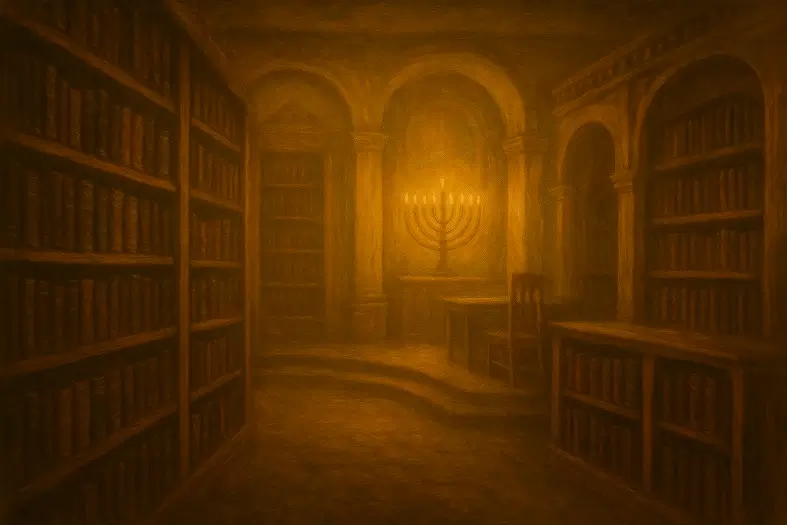


The Kohanim are commanded to light the Menorah in the Sanctuary every evening with pure olive oil.
This mitzvah requires the daily lighting of the Menorah in the Sanctuary, performed by Aaron and his descendants. The lamps were prepared in the morning, and they were lit each evening to burn through the night. The Torah emphasizes that pure olive oil, beaten for illumination, was required for this mitzvah.
The Talmud (Shabbat 22b) explains that the Menorah did not serve to provide light for Hashem but symbolized the Divine presence shining upon Israel. Rambam codifies that even if natural sunlight illuminated the Mikdash, the Menorah’s light was essential as a spiritual act of service. Midrash Tanchuma teaches that the Menorah’s flame testified to Hashem’s indwelling in Israel, particularly through the “western lamp” (ner ma’aravi) which miraculously burned longer. Sefer HaChinuch explains that the mitzvah symbolizes wisdom and Torah’s illumination guiding Israel’s path.
Commentary & Classical Explanation:
Parallel to Hanukkah:


Represents the concept of spiritual intentionality, purity, and sanctity—set apart for a higher purpose.
Concerns the Beit HaMikdash, korbanot (offerings), and priestly service.
Represents Emunah—the deep, inner trust in Hashem’s presence, oneness, and constant involvement in our lives. This badge symbolizes a heartfelt connection to G-d, rooted in belief even when we cannot see. It is the emotional and spiritual core of many mitzvot.
Signifies awe and reverence toward Hashem—living with awareness of His greatness and presence.
Mitzvot that strengthen communal life — showing up, participating, supporting, and belonging. Community is where holiness is shared, prayers are multiplied, and responsibility becomes collective.
Mitzvot that define and deepen the relationship between a person and their Creator. These include commandments involving belief, prayer, Shabbat, festivals, sacrifices, and personal holiness — expressions of devotion rooted in divine connection.

Dive into mitzvot, prayer, and Torah study—each section curated to help you learn, reflect, and live with intention. New insights are added regularly, creating an evolving space for spiritual growth.

Explore the 613 mitzvot and uncover the meaning behind each one. Discover practical ways to integrate them into your daily life with insights, sources, and guided reflection.

Learn the structure, depth, and spiritual intent behind Jewish prayer. Dive into morning blessings, Shema, Amidah, and more—with tools to enrich your daily connection.

Each week’s parsha offers timeless wisdom and modern relevance. Explore summaries, key themes, and mitzvah connections to deepen your understanding of the Torah cycle.